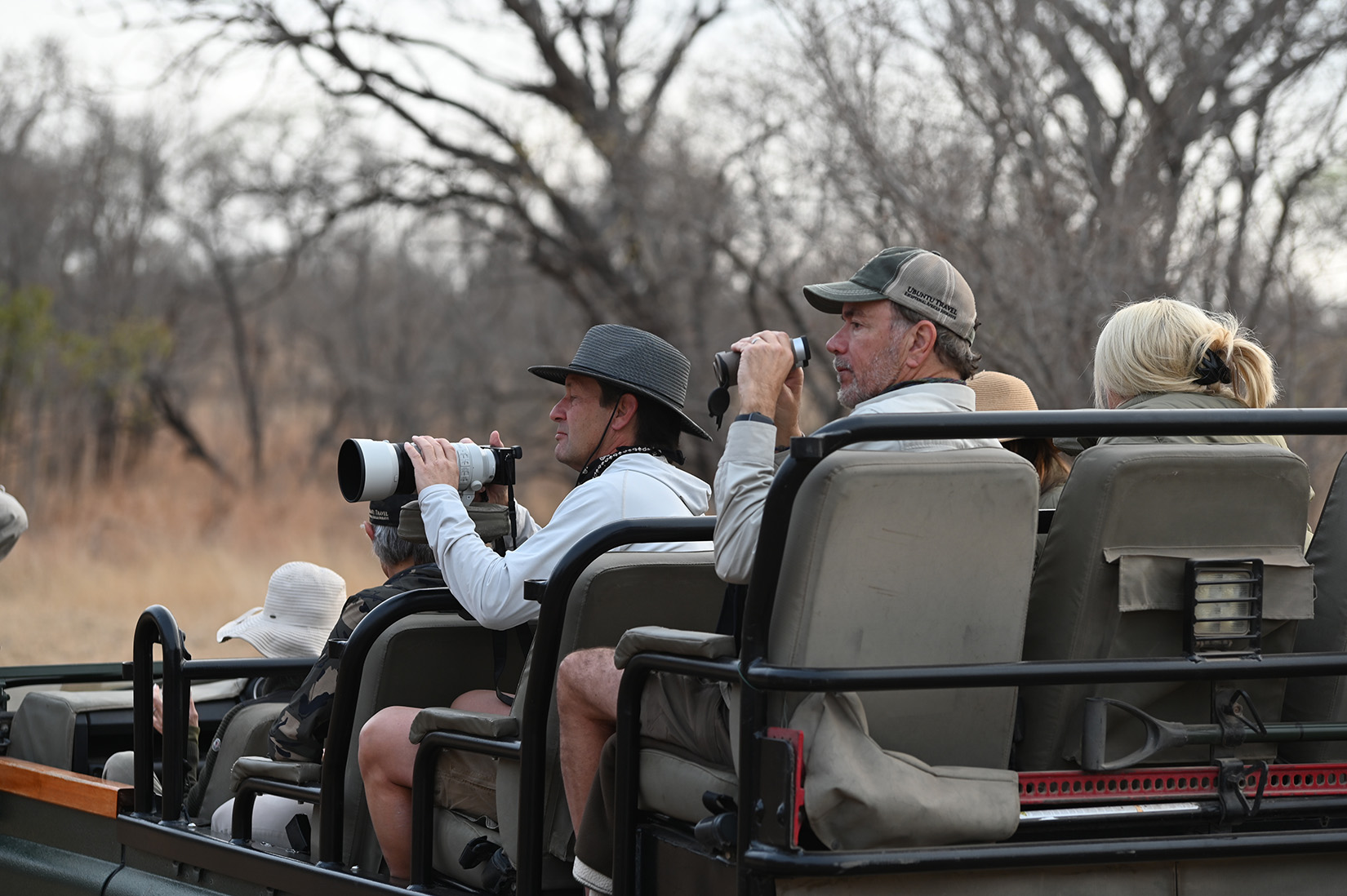While there are countless options on the market for cameras to take on safari, we’ve collected from our clients a set of criteria that can be useful while selecting a camera that will best suit your needs. Before purchasing and committing to a certain type of camera, you’ll want to account for your budget, what types of images you’re looking to capture, distinct features you’re looking for in a camera and your target quality for images. Of course, this also depends on your personal preferences and how advanced your photography skills are going into your safari experience. As always, we recommend conducting your own research before making any purchase, big or small.
Seeking out a Fancy Safari Camera? Consider Your Skill as Well!
Not even the most advanced photographers want to be so invested in “getting the right shot” that they completely miss out on the incredible safari experiences taking place in front of them. If you would consider yourself a novice photographer, it’s not recommended that you select a particularly technical camera, or one with bulky equipment, as a camera like this would more than likely require you to change out the lens often. ‘Living behind the lens’ like this would undoubtedly take away from your experience, rather than adding to it. Moreover, if you are new to photography, opting for a camera that shoots automatic is critical.
Other Things to Consider when Searching for the Perfect Safari Camera
Regardless of the camera you select, the one you end up choosing should, ultimately, check certain boxes. Consider the list below:
- Durability: African safaris are known for being tough on equipment/technology. Your camera should be able to withstand dust, debris, wind, rain, and shock (in the unlikely event that it’s dropped or thrown from a moving vehicle).
- Weight + Size: Because most airlines have a restriction on luggage weight, we recommend choosing a camera that isn’t too heavy, as it will be weighed with the rest of your luggage.
- Zoom or Wide Angle Lens: Although not a necessity, having each type of lens allows you to capture both landscapes and animals.
- Frames Per Second: Different situations require different frames per second. For fast-moving animals, you’ll want a lens that can accommodate such a situation by capturing as many frames per second as possible.
- Battery Life: Nothing is worse than having a quality camera with poor battery life. Be sure to read reviews and do research to find out if a camera you’re interested in falls into this category. If needed, select a different model or brand altogether.
- Connectivity – WiFi, Bluetooth: Assuming you plan to capture many images while on safari, be sure that your camera offers good connectivity options for transferring files.
In terms of features themselves, we recommend a camera with most or all of the following features:
- Image stabilization, also known as anti-shake
- ISO ratings
- Connectivity
- Burst mode
- Lens availability + compatibility
- Preset modes
- Shoot in raw and .jpg
- LCD Size
- Time-lapse
- Touch screen autofocus
- Creative auto settings
Types of Cameras for Safari
You might be wondering which cameras, given the list above, fit the bill. There are also various types of cameras, including point and shoot, smartphone, superzoom cameras, DSLR, mirrorless, and action cameras. In terms of quality, DSLR will almost always be your best bet. Given those categories, here are some of our top recommendations:
- Canon 80D or any in the Canon Rebel Series (DSLR): A popular recommendation and a great option for someone’s first safari, this camera is weatherproof, shoots 24mp stills, and offers WiFi connectivity so users can shoot from their phone.
- Canon PowerShot SX730 (Point and Shoot): Equipped with a 24mm lens with the ability to capture 20.3 megapixel images, this camera is compact and easily fits inside your pocket.
- Panasonic Lumix FZ80 (Superzoom): This camera zooms to 60X optical zoom and shoots video in 4k resolution.
Sony Alpha a6000 (Mirrorless): Boasting the same quality as a DSLR but without the bulk, mirrorless cameras are a great option to capture fast-moving animals and shoots an impressive 24 megapixels. - GoPro: An easy-to-operate and compact device, the GoPro is a favorite for travelers and adventurers alike. As camera quality has improved over the years, GoPro is ideal for safari and pairs nicely with mounting accessories to capture the perfect shot.
Camera Accessories fit for Safari in Africa
One of the most important accessories to have is a solid camera bag. Keep in mind that because most airlines require that you have a soft-sided bag, something extra sturdy to support and protect your camera gear is crucial. For those that prefer the convenience of capturing images on their mobile devices (which is often most handy), the 3-axis Osmo Mobile 3 is one of the finest gimbals out there. According to their website, this gimbal “effectively reduces shaky footage… and delivers a super-smooth, stabilized image. A lightweight, ultra-responsive design reacts to your movements in real-time, letting you focus more on the moment at hand.”
For the aforementioned GoPro, a head or chest mount is a useful addition so you can be handsfree and go about your adventure while simultaneously getting quality footage. This makes it suitable for whitewater rafting, hiking, gorilla trekking, hot air balloon rides and virtually any kind of outing, especially if you want your focus to be on the activity at hand. Other useful accessories include extra batteries, tripods, clamp mounts, and lenses.
Other Purchasing Tips
Shopping with certified retailers or directly from a company’s website is your best bet when purchasing a camera. It’s not advised to buy a camera used, as there is no way to assess the damage.
Conclusion
While getting the “perfect” photo while on safari is a dream of many, and having memorable photos of your trip is fulfilling, we can’t stress enough that capturing moments and being present is just as important as the time you spend photographing them. This ensures that you’re fully reveling in each moment as it’s happening, especially if traveling with your loved ones. Truly immersing yourself in the wildlife and scenery is what will stay with you long after your trip is over.
Related Posts



Start Planning Your Dream Trip
Reach out and let’s start talking. We’ll listen and begin to tailor an experiential, private, luxury vacation based on exactly how you want to experience Africa. From adventure to relaxation—and everything in between—let us handle every detail of your unforgettable journey.
Interested?



